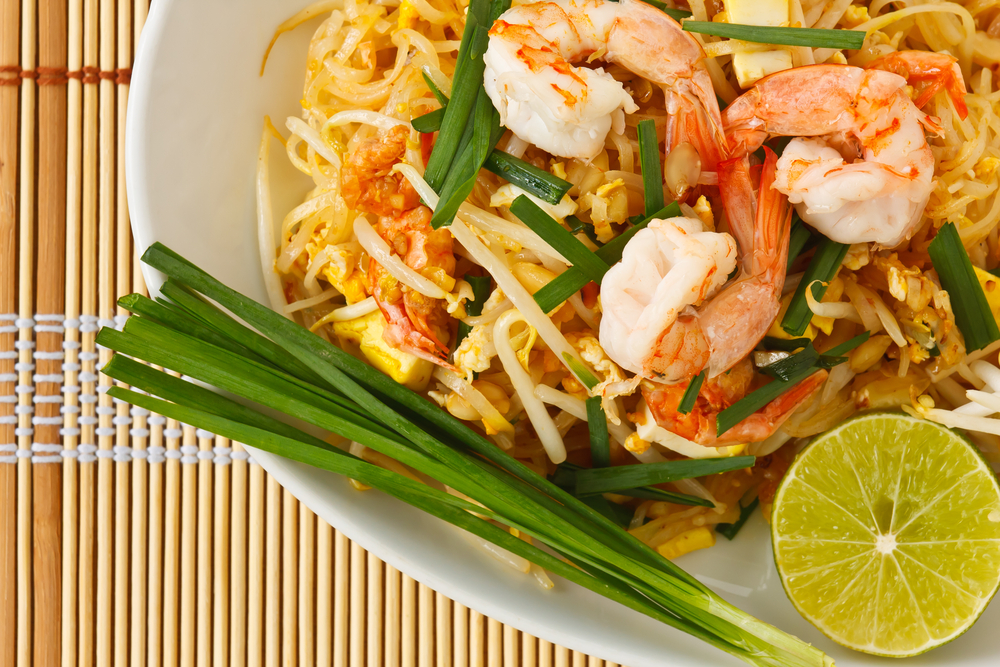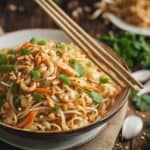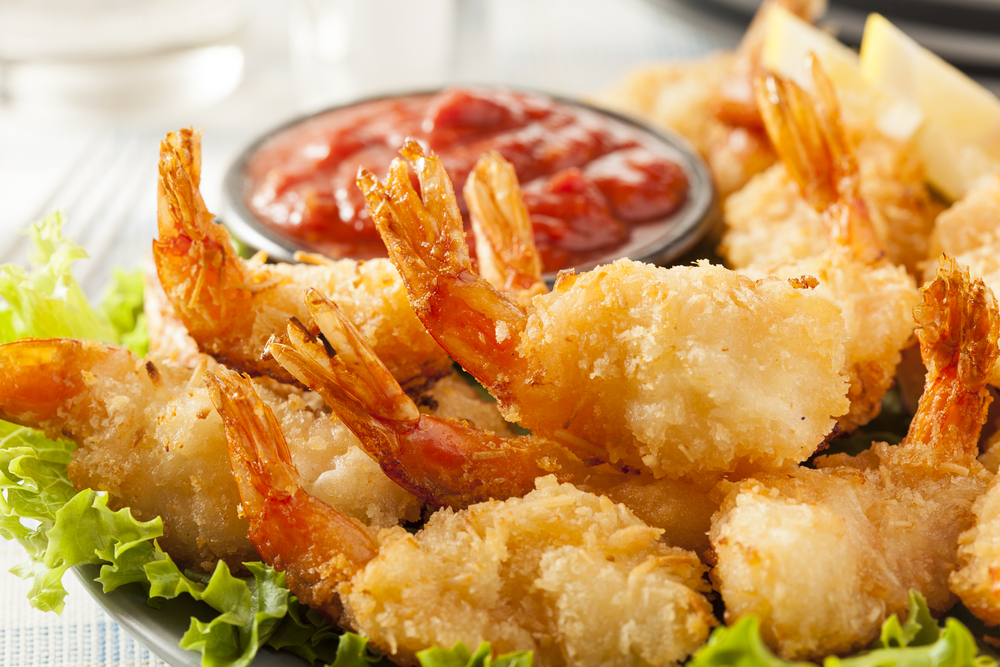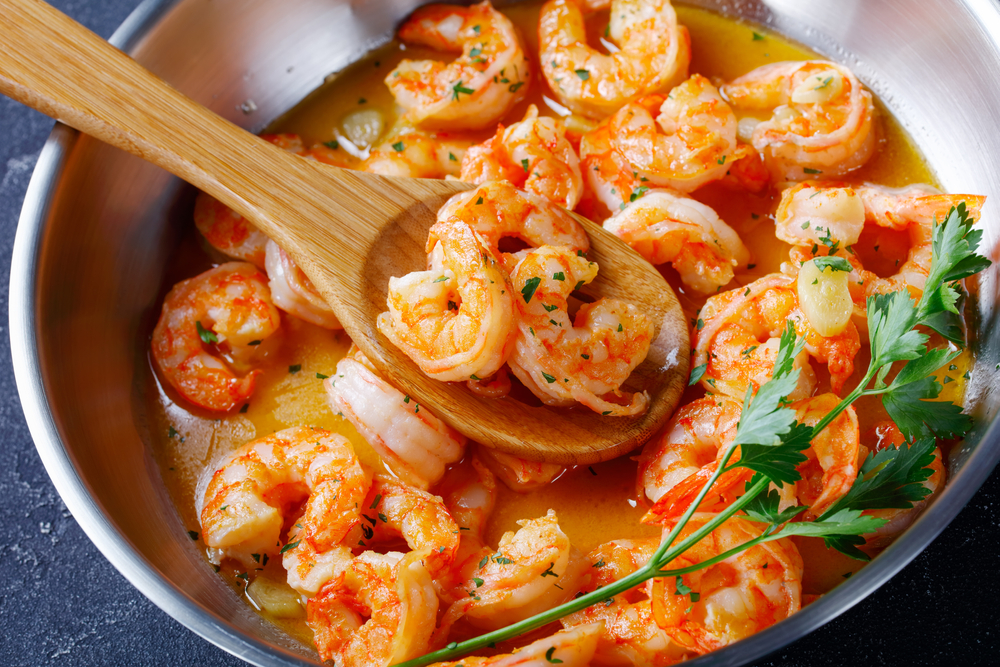Reheating Pad See Ew can be a bit tricky since it is a stir-fried dish that contains wide rice noodles, which can quickly turn into a mushy mess if not reheated properly.
However, with the right technique, you can bring back the dish’s optimal texture and flavor, making it as delicious as when it was freshly made.
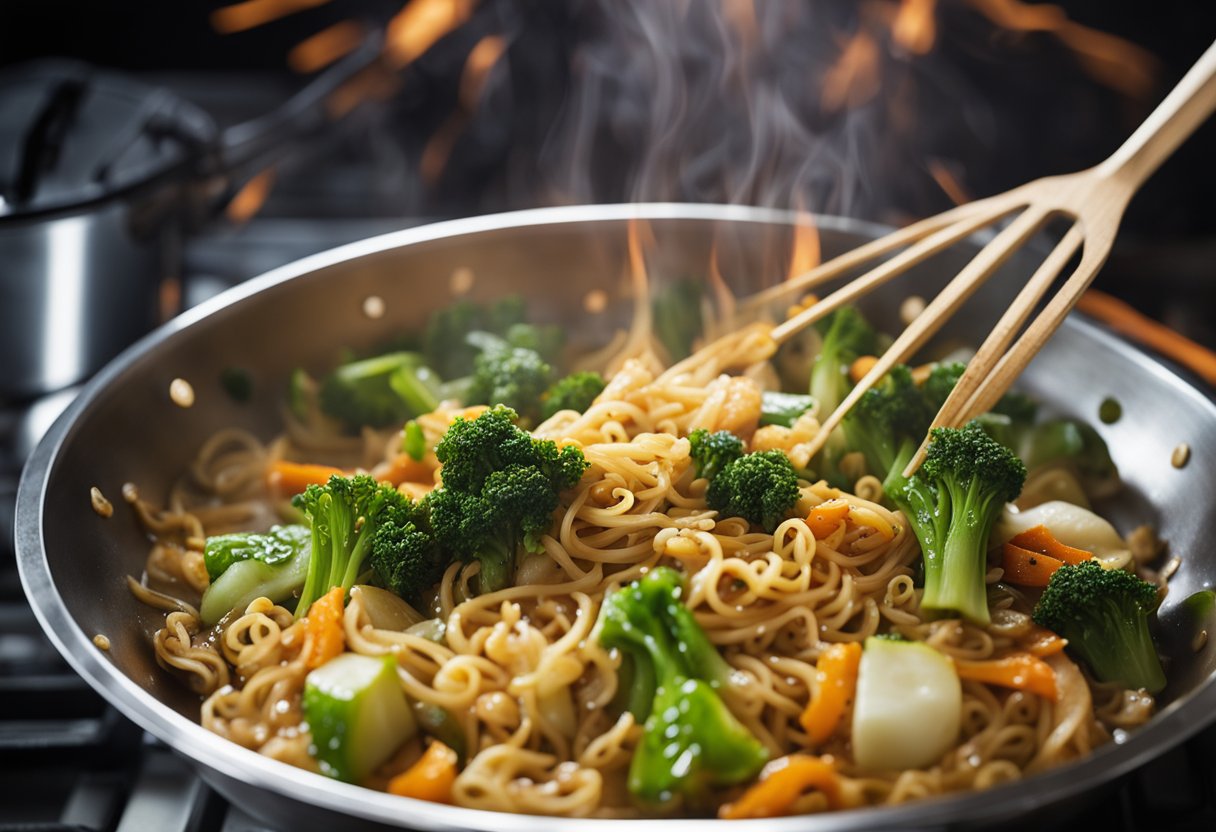
Understanding Pad See Ew is crucial before reheating it. Pad See Ew is a popular Thai dish that consists of wide rice noodles, protein (chicken, beef, or shrimp), Chinese broccoli, soy sauce, and other seasonings.
It is stir-fried over high heat, giving the noodles a slightly charred flavor and a chewy texture. When reheating Pad See Ew, it is essential to maintain the dish’s texture and flavor, so it doesn’t turn into a soggy mess.
Preparation Before Reheating is also crucial to ensure that Pad See Ew maintains its texture and flavor. Before reheating, you should separate the noodles from the other ingredients, as the noodles tend to absorb moisture and become mushy when mixed with other ingredients.
Additionally, you should store the noodles in an airtight container in the refrigerator and reheat them separately from the other ingredients.
Key Takeaways
- Understanding Pad See Ew is crucial before reheating it.
- Preparation Before Reheating is essential to ensure that Pad See Ew maintains its texture and flavor.
- Reheating Techniques should be followed carefully to ensure that Pad See Ew retains its optimal texture and flavor.
Understanding Pad See Ew
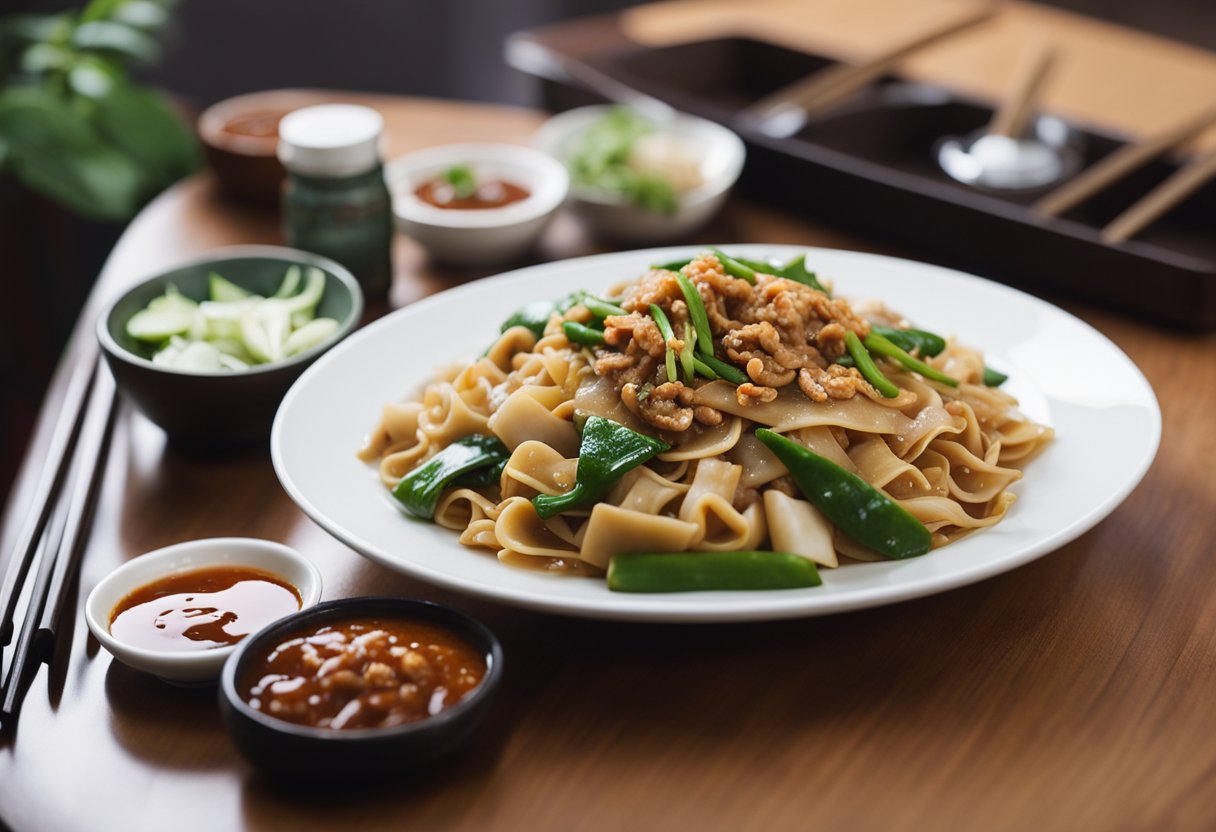
Pad See Ew is a popular Thai dish made with rice noodles, vegetables, and protein. It is a stir-fry dish that is commonly found in Thai restaurants. The name “Pad See Ew” means “stir-fried soy sauce noodles” in Thai.
Ingredients Breakdown
The main ingredients in Pad See Ew are rice noodles, vegetables, and protein. The vegetables used in this dish are typically Chinese broccoli or bok choy. The protein can be chicken, beef, pork, or tofu.
In addition to the main ingredients, the dish is flavored with a combination of sauces. Soy sauce, oyster sauce, and fish sauce are commonly used to give the dish its savory flavor.
Dark soy sauce is used to give the noodles their dark color. Sugar and salt are added to balance out the flavors.
Nutritional Information
Pad See Ew is a relatively high-calorie dish, with one serving containing around 600-700 calories. The dish is also high in fat, with around 30-40 grams of fat per serving. However, it is also a good source of protein and contains a variety of vegetables.
The nutritional information for Pad See Ew can vary depending on the specific ingredients used and the cooking method. It is important to keep this in mind when preparing the dish at home.
Overall, Pad See Ew is a delicious and satisfying dish that can be enjoyed as a meal or as leftovers. With a better understanding of the ingredients and nutritional information, you can make informed choices when preparing and enjoying this dish.
Preparation Before Reheating
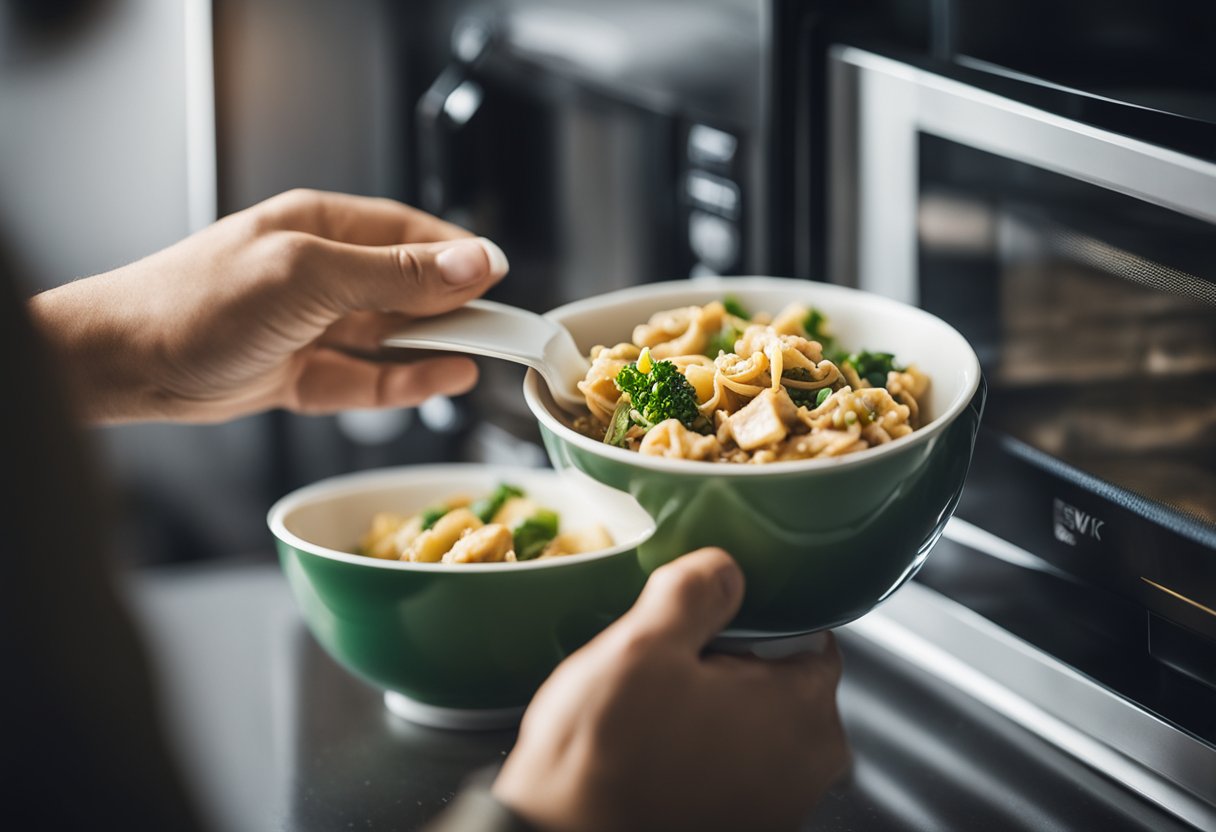
When it comes to reheating Pad See Ew, preparation is key. Proper preparation ensures that the dish retains its texture, flavor, and nutritional value. In this section, I will share some tips on how to prepare Pad See Ew for reheating.
Storing Leftovers
Before reheating Pad See Ew, it is important to store the leftovers properly. This helps to prevent spoilage and maintain the quality of the dish.
To store leftovers, transfer the Pad See Ew to an airtight container. Airtight containers help to keep out moisture and air, which can cause the food to spoil quickly.
Choosing the Right Container
When it comes to storing Pad See Ew, the container you choose is just as important as the storage method.
Aluminum foil is not recommended as it can react with acidic foods and cause a metallic taste. Instead, use a container made of glass or plastic. Make sure the container is clean and dry before adding the Pad See Ew.
To maximize the shelf life of Pad See Ew, store it in the fridge. Pad See Ew can be stored in the fridge for up to 4 days. If you want to store it for a longer period, consider freezing it. Frozen Pad See Ew can last up to 2 months.
In summary, proper preparation before reheating Pad See Ew is crucial. Storing leftovers in an airtight container and choosing the right container can help maintain the quality of the dish.
By following these tips, you can enjoy a delicious and nutritious meal every time you reheat your Pad See Ew.
Reheating Techniques
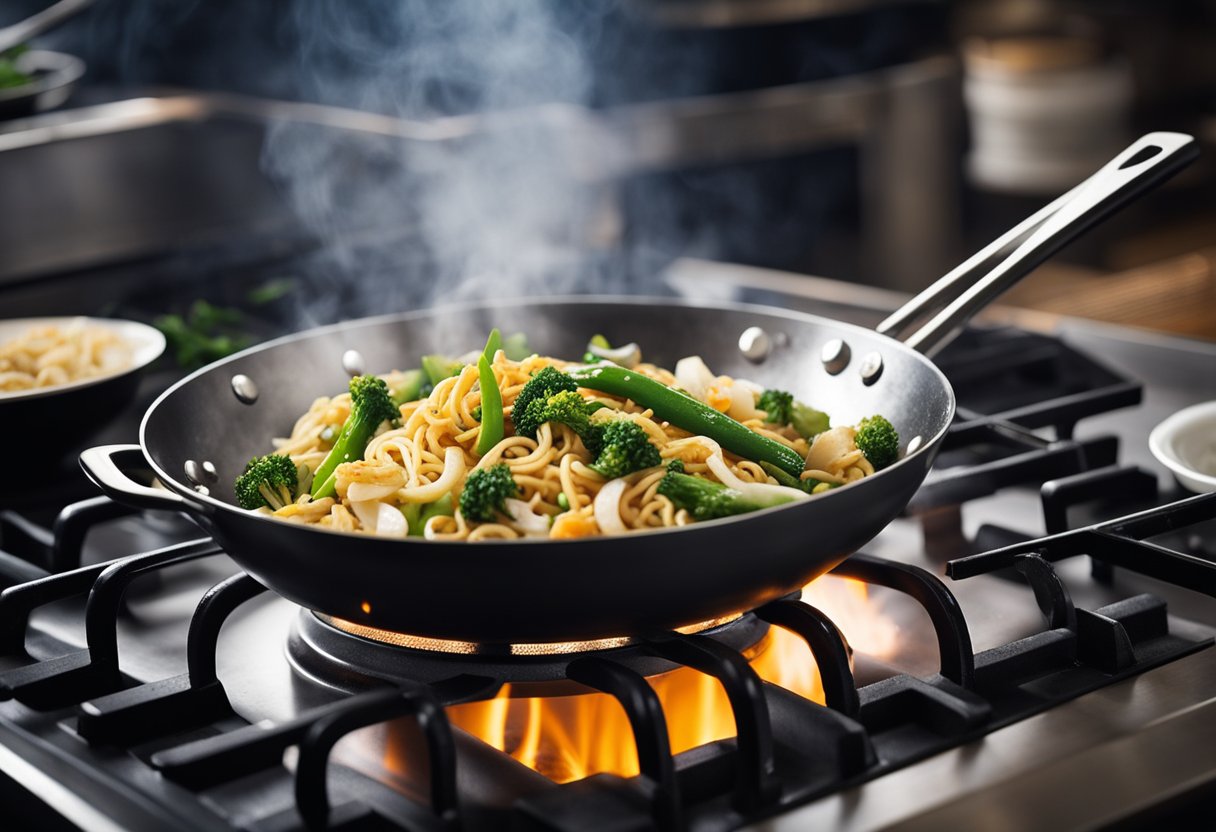
When it comes to reheating Pad See Ew, there are a few different methods you can use. Each method has its own advantages and disadvantages, so it’s important to choose the one that works best for you based on your equipment and preferences.
Microwave Method
The microwave method is the quickest and easiest way to reheat Pad See Ew. To use this method, simply place the Pad See Ew in a microwave-safe dish and cover it with a damp paper towel.
Microwave the dish on high heat for 1-2 minutes, or until the Pad See Ew is heated through.
One potential downside to the microwave method is that it can dry out the Pad See Ew and affect its texture. To combat this, you can add a splash of water or oil to the dish before microwaving it to help retain moisture.
Stovetop Method
The stovetop method involves reheating the Pad See Ew in a skillet or wok over medium-high heat. To use this method, heat a small amount of oil in the skillet or wok and add the Pad See Ew. Stir the Pad See Ew frequently to ensure it heats evenly and doesn’t burn.
This method can be a bit more time-consuming than the microwave method, but it allows you to control the temperature and texture of the Pad See Ew more easily. You can also add a splash of water or oil to the skillet or wok to help retain moisture.
Oven Method
The oven method is a good option if you have a larger amount of Pad See Ew to reheat. To use this method, preheat your oven to 350°F (175°C) and place the Pad See Ew in an oven-safe dish.
Cover the dish with foil and bake it for 10-15 minutes, or until the Pad See Ew is heated through.
One potential downside to this method is that it can take longer than the other methods. However, it does allow you to evenly heat a larger amount of Pad See Ew without affecting its texture or moisture.
Overall, the best method for reheating Pad See Ew will depend on your personal preferences and equipment. Whether you choose to use the microwave, stovetop, or oven method, be sure to monitor the Pad See Ew closely to ensure it doesn’t dry out or burn.
Ensuring Optimal Texture and Flavor
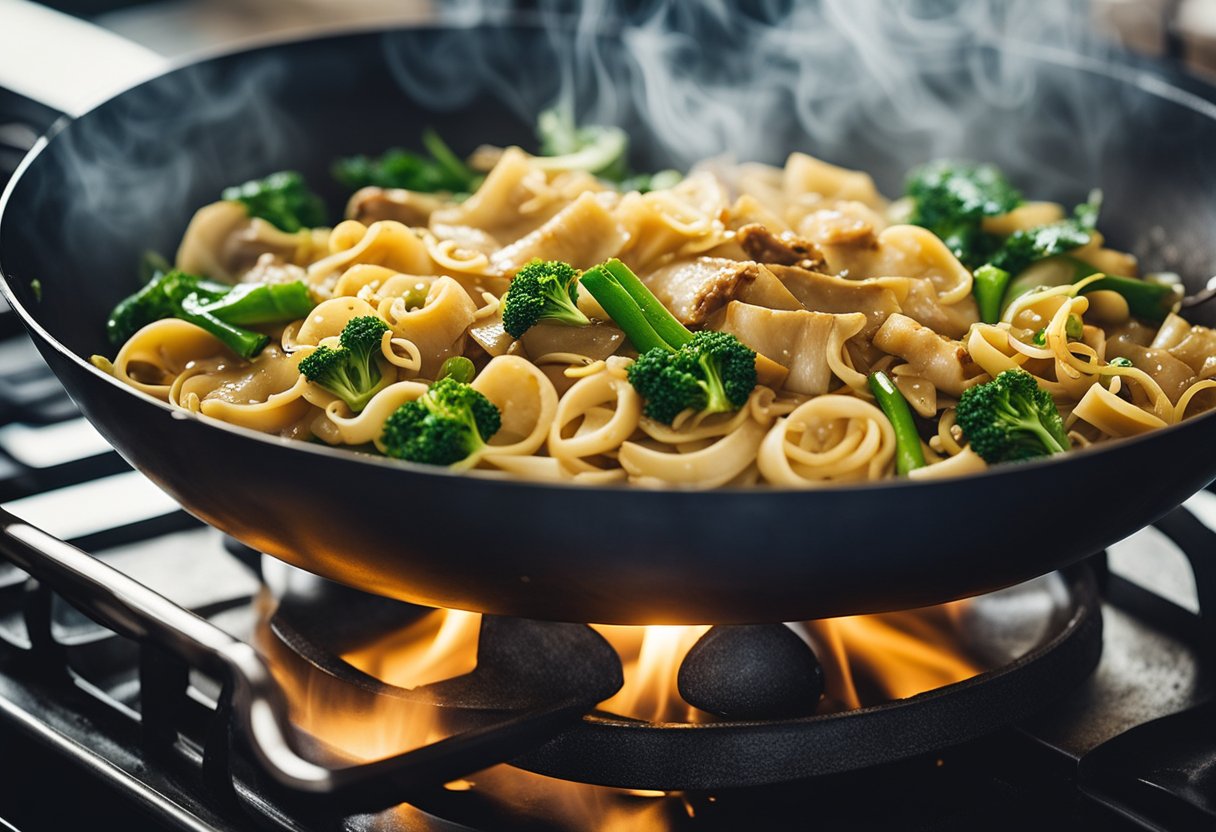
When reheating Pad See Ew, it’s important to ensure that the dish retains its optimal texture and flavor. Here are some tips to help you achieve that:
Adjusting Heat
To prevent the noodles from becoming too soft or mushy, it’s important to reheat Pad See Ew on high heat. However, it’s also important to adjust the heat as needed to prevent burning.
I recommend starting with high heat and then reducing the heat to medium or medium-high once the dish is hot.
Adding Freshness
To add freshness to the reheated Pad See Ew, consider adding some fresh vegetables. Broccoli or Chinese broccoli are both great options that will add some crunch and color to the dish.
Simply sauté the vegetables in vegetable oil and garlic until they’re crisp-tender, and then add them to the reheated Pad See Ew.
Another way to add freshness is to top the dish with some fresh herbs, such as cilantro or Thai basil. This will give the dish a burst of flavor and color.
By following these tips, you can ensure that your reheated Pad See Ew retains its umami flavor and has a crisp, chewy texture that’s reminiscent of the freshly cooked dish.
Additional Tips and Tricks
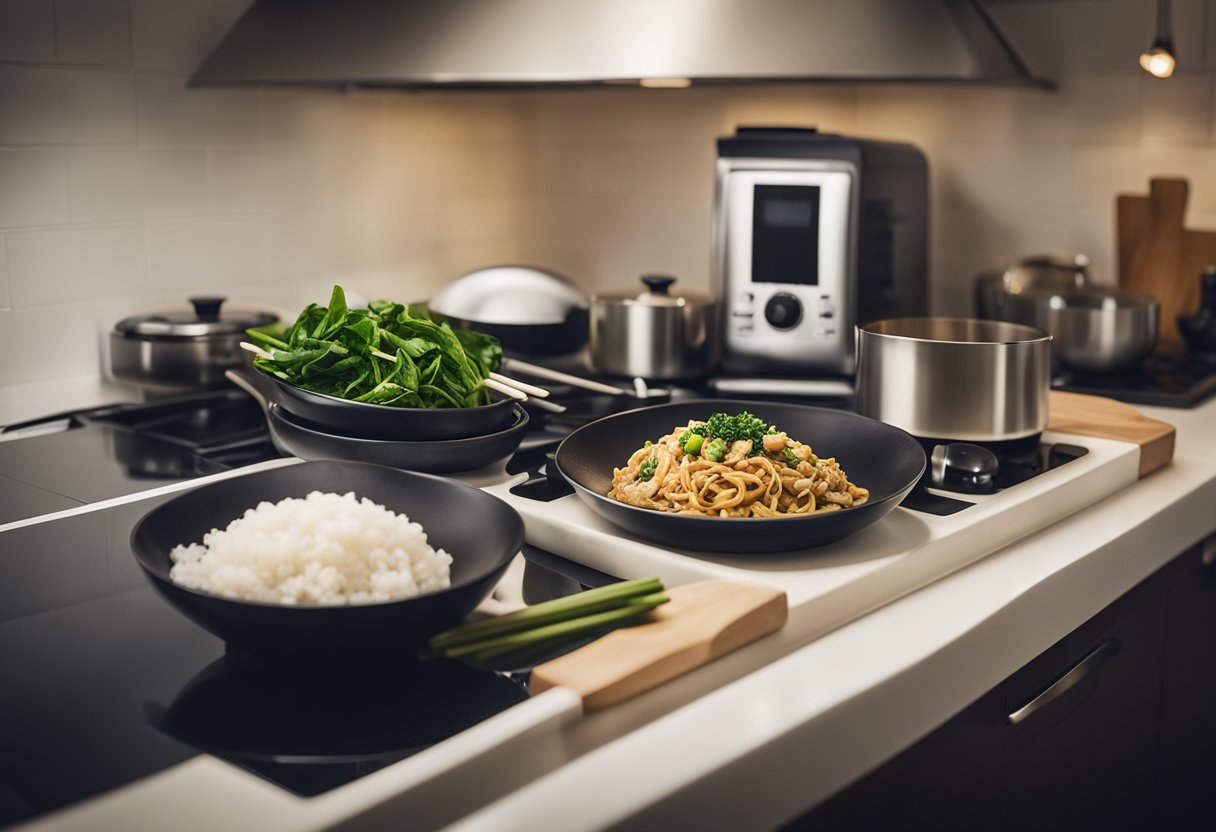
Avoiding Common Mistakes
When reheating leftover Pad See Ew, it’s important to avoid common mistakes that can ruin the dish. One of the most common mistakes is using high heat.
While high heat may seem like the best way to quickly reheat the dish, it can actually cause the noodles to become dry and rubbery. Instead, it’s best to use medium heat and allow the noodles to slowly heat up.
Another mistake to avoid is using an iron skillet or wok. Iron skillets and woks can be great for cooking stir-fried vegetables and protein, but they can also cause the noodles to stick and burn. Instead, it’s best to use a non-stick skillet or wok to prevent sticking.
Enhancing Leftover Pad See Ew
To enhance the flavor and freshness of leftover Pad See Ew, there are a few tricks you can try. One of the easiest ways to enhance the dish is to add fresh herbs and spices. A sprinkle of coriander or a squeeze of lime wedge can add a burst of flavor to the dish.
Another way to enhance the dish is to add some stir-fried vegetables or protein. This will not only add more flavor and texture to the dish but also make it more filling and nutritious.
Finally, to ensure that the noodles retain their freshness and texture, it’s best to reheat them in small portions. This will allow the noodles to heat up evenly and prevent them from becoming mushy or overcooked.
By following these tips and tricks, you can easily reheat leftover Pad See Ew and enjoy it just as much as when it was first cooked.
Frequently Asked Questions
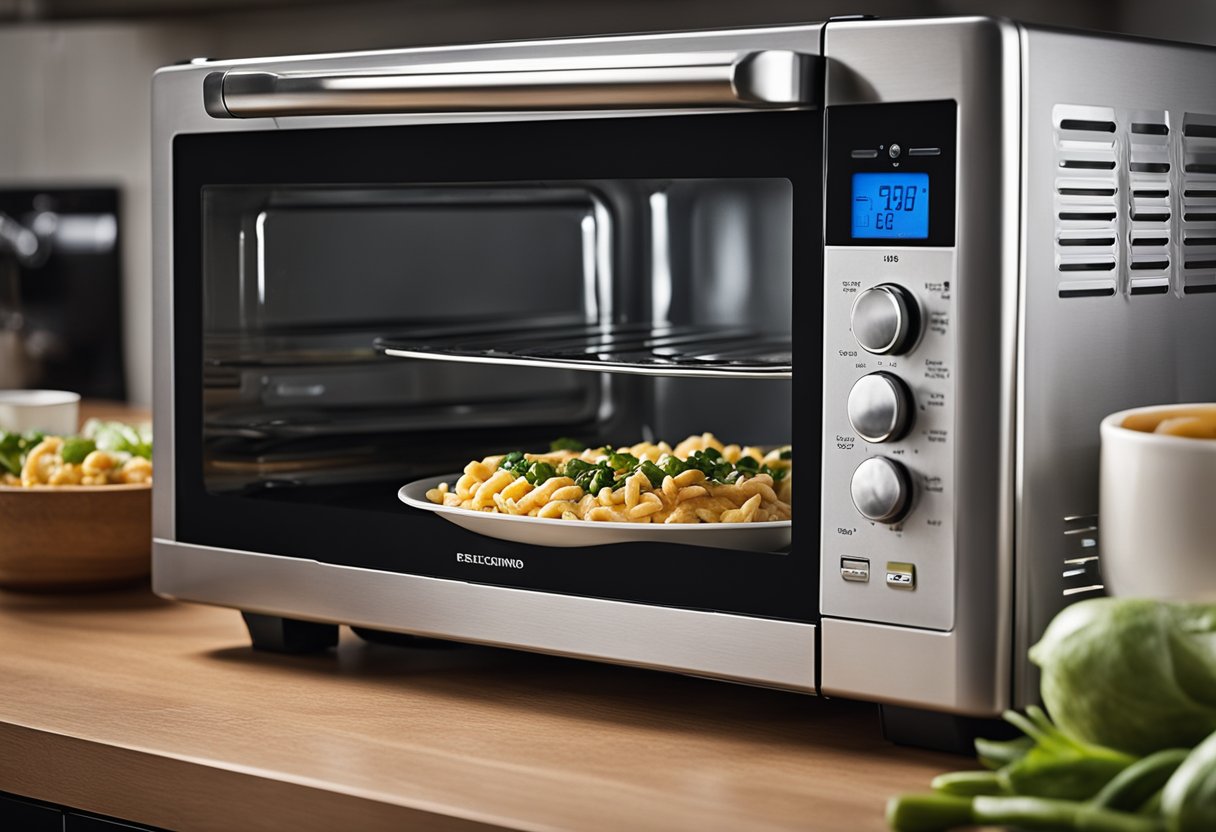
What is the best method to reheat stir fry noodles on the stove?
The best method to reheat stir fry noodles on the stove is to use a dry heat method. Heat a skillet or wok over medium-high heat and add a small amount of oil to prevent sticking.
Once the pan is hot enough, add your leftover Pad See Ew directly into the skillet or wok. Stir fry the noodles for 2-3 minutes or until they are heated through. This method will help recreate that delicious crispy texture.
Can I safely reheat noodles with egg, such as in Pad Thai?
Yes, it is safe to reheat noodles with egg, such as in Pad Thai. You can reheat Pad Thai using a microwave, oven, or stovetop. However, you should always ensure that the noodles are heated to an internal temperature of 165°F to kill any harmful bacteria.
Is it possible to reheat noodle dishes like Pad See Ew in an air fryer?
Yes, it is possible to reheat noodle dishes like Pad See Ew in an air fryer. Preheat the air fryer to 350°F and place the leftover noodles in the basket.
Cook for 3-4 minutes or until the noodles are heated through. However, be aware that this method may not produce the same crispy texture as the stove or oven methods.
How can leftover udon soup be reheated without losing its quality?
To reheat leftover udon soup without losing its quality, use a stovetop or microwave. Heat the soup on medium heat until it reaches a simmer, stirring occasionally. Alternatively, heat the soup in a microwave-safe bowl for 1-2 minutes or until it is heated through.
What techniques work well for reviving leftover Thai noodle dishes?
To revive leftover Thai noodle dishes, add a small amount of water or broth to the noodles before reheating.
This will help prevent the noodles from drying out and becoming rubbery. You can also add fresh herbs, such as cilantro or basil, to enhance the flavor of the dish.
Are there any special considerations when reheating Thai food with chicken?
When reheating Thai food with chicken, it is important to ensure that the chicken is heated to an internal temperature of 165°F to kill any harmful bacteria.
You should also avoid reheating the chicken more than once, as this can increase the risk of foodborne illness.


